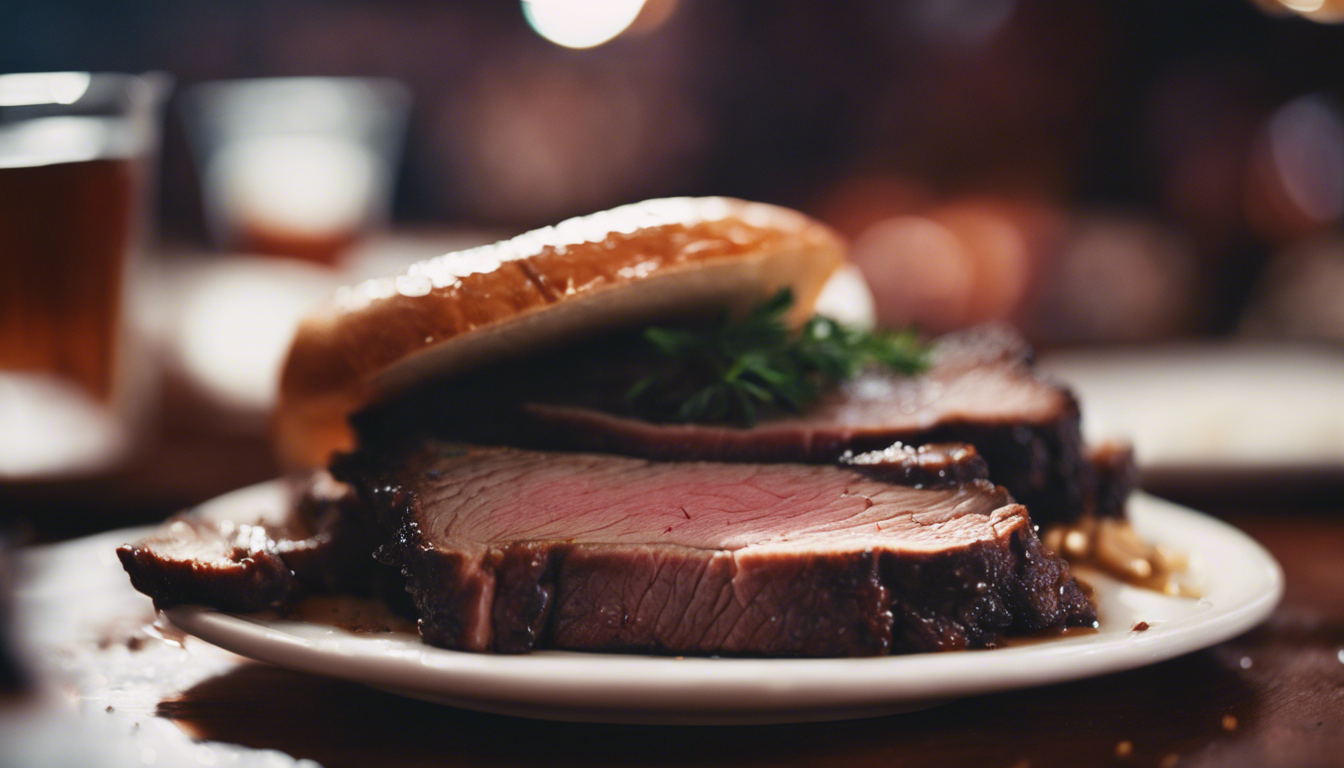
The History and Origins of Texas Brisket
The history of Texas brisket dates back to the 1800s when Czech and German immigrants settled in Texas and brought with them their traditional methods of smoking meat. Brisket, which comes from the chest area of the cow, was initially considered a less desirable cut of meat due to its tough texture. However, the immigrants discovered that by smoking the brisket low and slow over indirect heat, the meat became tender and flavorful.
As the popularity of smoked brisket grew, it became a staple at community gatherings and celebrations in Texas. The dish was further popularized in the 1960s by pitmasters such as Louie Mueller and Sonny Bryan, who opened barbecue restaurants and popularized the Central Texas-style of smoking brisket with a simple dry rub of salt and pepper.
Today, Texas brisket is known for its smoky flavor, tender texture, and signature pink smoke ring. It is often served with traditional sides such as coleslaw, potato salad, and beans, and is a beloved dish at barbecues and family gatherings across the state.
Tips and Techniques for Cooking the Perfect Texas Brisket
When cooking the perfect Texas brisket, one of the most important tips is to select the right cut of meat. Look for a brisket with a good amount of marbling, as this fat will render down during the cooking process and keep the meat moist and flavorful. The ideal brisket should have a thick, even fat cap on one side.
Before cooking, it’s crucial to trim the fat cap down to about 1/4 inch thickness. This allows the smoke to penetrate the meat while still providing enough fat to keep it moist. Next, apply a simple dry rub made from coarse salt and black pepper. Some pitmasters also add garlic powder, onion powder, and paprika for an extra layer of flavor. It’s important not to use too much rub, as this can overpower the natural taste of the meat.
When it comes to smoking the brisket, patience is key. Cook it low and slow over indirect heat, ideally using oak or hickory wood for a traditional Texas flavor. The ideal temperature range for smoking brisket is between 225-250 degrees Fahrenheit. It’s important to maintain a consistent temperature throughout the cooking process, which can take anywhere from 8 to 12 hours depending on the size of the brisket. A good rule of thumb is to cook the brisket for about 1-1.5 hours per pound.
Another essential technique is to wrap the brisket in butcher paper or aluminum foil once it reaches an internal temperature of around 160-170 degrees Fahrenheit. This helps retain moisture and prevents the outside from getting too dark or burnt. After wrapping, continue cooking until the brisket reaches an internal temperature of 195-205 degrees Fahrenheit. This is when the collagen within the meat breaks down and becomes tender.
Once the brisket is finished cooking, it’s important to let it rest for at least an hour before slicing. This allows the juices to redistribute throughout the meat, resulting in a juicier and more flavorful brisket. Be sure to slice the brisket against the grain for the most tender bite.
Remember, practice makes perfect when it comes to cooking Texas brisket. Don’t be discouraged if your first attempt isn’t perfect; with each cook, you’ll learn and improve your technique.
